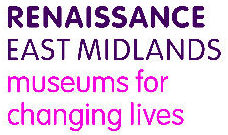Preparing For Digitisation
Management Issues
It is important that managers and governing bodies are fully aware of the implications of a digitisation project, especially the need to maintain resources beyond the project. Managers need to have sufficient knowledge to devise and implement relevant policies and procedures including a training plan.
Staff and Volunteers
Digitisation projects often require the recruitment of staff or volunteers. At the implementation stage these are some valuable skills including (a) awareness of general issues in digitisation; (b) practical digitisation skills and experience; (c) broader organisational skills; (d) methodical approach; (e) keyboard skills; (f) experience of databases, collections management systems, image management software; (g) ability to apply due care in handling museum objects and (h) discrimination in relevant areas e.g. visual (ability to distinguish colours), audio (awareness of background sounds).
Production may be in-house, through shared hardware and personnel, or using an external digitisation company.
Location
A separate photographic, audio or video studio is ideal. If museum objects are to be kept in the studio then security will need to be in line with that of stores. Control over movement of works of art should follow Spectrum standards.
Hardware
Hardware is a general term to describe the equipment needed for digitisation such as scanners, cameras (still and video), and audio and video recorders. The choice of equipment will be dictated by the scale and ambition of the project. The gap between consumer and professional equipment is becoming less well-defined.
Digitisation Strategy – Selecting Suitable Approaches
2D and 3D material may be captured in digital format through scanning or digital photography. The table below illustrates possible approaches.
| Originals | Method | Resolution / Colour Depth | Notes |
|---|---|---|---|
| Letters and line art (Black & white) |
Flatbed scanner or digital camera | 600 dpi 1-bit |
The high resolution aids legibility. You may want to capture these in colour to be more naturalistic e.g. to communicate the colour of the paper. |
| Illustrations & maps (Colour or black & white) |
Flatbed scanner or digital camera | 300 dpi, 8-bit grayscale or 24-bit colour. | The lower resolution should be adequate but may need to be tested ref legibility. |
| Photograph (Colour or black and white) | Flatbed scanner | 300 dpi 24-bit colour | |
| 35mm slides and negatives (Colour or black & white) | Slide scanner or flatbed scanner with transparency adapter | 1200 dpi, 24-bit colour or 8-bit grayscale | |
| 2D and 3D objects | Digital camera | 300 dpi, 24-bit colour | lack and white artists’ prints may be photographed in colour (see above). For 3D objects a number of alternate views may be taken to more fully represent the object |
Notes
- Resolution is that captured when scanned or photographed, lower resolutions may be used in publication.
- TIFF should used for capture (and/or archive), other formats such as PNG or JPEG may be used in publication.
- Black and white photographs may be in grey tones, and sometimes colours from chemical processes used, e.g. sepia prints, or from aging.
- Sizes will vary with the size in pixels and the content of the image.
Acknowledgements
 This document has been produced from information contained within the Renaissance East Midlands Simple Guide to Digitisation that was researched and written by Julian Tomlin and is available from http://www.renaissanceeastmidlands.org.uk/. We are grateful for permission to republish this document under a Creative Commons licence. Anyone wishing to republish this document should include acknowledgements to Renaissance East Midlands and Julian Tomlin.
This document has been produced from information contained within the Renaissance East Midlands Simple Guide to Digitisation that was researched and written by Julian Tomlin and is available from http://www.renaissanceeastmidlands.org.uk/. We are grateful for permission to republish this document under a Creative Commons licence. Anyone wishing to republish this document should include acknowledgements to Renaissance East Midlands and Julian Tomlin.
Filed under: Needs-checking, Project Planning
